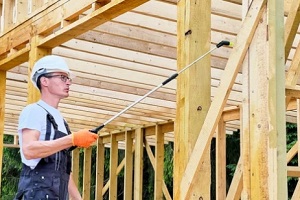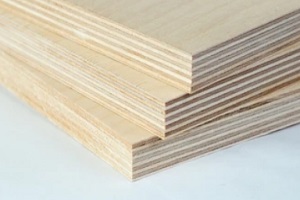 As towns and cities strive to provide affordable housing options and thriving business environments, three- and four-level mixed-use developments are popular solutions to these challenges. To ensure the safety of these structures and their occupants, building codes require the use of non-combustible and fire-retardant materials as part of the building envelope and interior structures wherever possible.
As towns and cities strive to provide affordable housing options and thriving business environments, three- and four-level mixed-use developments are popular solutions to these challenges. To ensure the safety of these structures and their occupants, building codes require the use of non-combustible and fire-retardant materials as part of the building envelope and interior structures wherever possible.
Non-combustible materials – stone, concrete, glass and metal – are common elements of foundations, structural framing and exterior finishes. Interior walls, floors and ceilings, however, are typically constructed with combustible materials like wood. Choosing the best fire-retardant wood for the job requires understanding how this material is made in the first place.
Here’s what you should know about how fire retardant wood is treated and how it holds up over time so you can make an informed choice for your next construction project.
Pressure-Treated Fire Retardant Wood
The pressure-treated variety is one of the most common types of fire retardant treated wood (FRTW). This lumber is placed into an industry-specific cylinder called a retort. Because lumber comes in varying sizes, retorts are often exceptionally large, some reaching up to 140 feet or more.
Once the lumber is inside the retort, the device is sealed, and the air is ejected so that the internal capsule is a vacuum. The fire inhibitor solution is slowly injected into the retort, and the pressure from the vacuum forces it into the wood cells and fibers.
Once the pressure treating process is complete, the now-treated wood is moved to a kiln to reduce the moisture content of the wood to industry established standards of 19% for lumber and 15% for plywood. After this, the wood can be painted or stained like normal wood.
It is important to know that the fire retardant chemicals do not provide any preservative or pest deterrent qualities. Without painting, staining or sealing in some manner, FRTW will succumb to rot and decay in the presence of moisture.
Coated Fire Retardant Wood
An alternative, faster method of fire retardant application is spray coating. In this scenario, the wood is not placed into a retort; instead, the fire-inhibiting chemicals are painted onto the outside of the lumber. Coated materials are ready for transport and installation used when the solution is no longer tacky.
Though coated wood is faster and may be less expensive to make than pressure-infused FRTW, building codes require using pressure-infused FRTW to achieve 1- or 2-hour fire rated structures.
Will Fire Retardant Wood Still Burn?
The purpose of fire retardant wood is to inhibit the spread of fire in homes and commercial structures to provide more time to evacuate . However, all types of fire retardant wood will eventually begin to burn if given enough time—the only materials that do not burn under any circumstance are inflammable (such as concrete), which are not viable for many construction applications like framing.
Coated fire retardant wood will be the quicker of the two to catch fire. Once the coating on the outside has done its job and been worn away by the constant flames, the interior of the lumber that has not been treated will catch fire, just like untreated wood.
Additionally, because coated wood relies only on this external layer of painted protection, any scratches or damage that occurred to the wood while it was in transit or being installed could chip away the protective layer, reducing its effectiveness during a fire.
Conversely, pressure-treated fire retardant wood will typically last longer under the threat of flames. The fire inhibitor has been pushed through all of the fibers of the lumber, so even if the flames penetrate the first layer, they cannot latch onto untreated wood.
 This slows the spread of fire, giving emergency responders enough time to arrive, and allows people to evacuate. Wood that has been pressure-treated cannot have its flame-retardant coating stripped due to wear and tear.
This slows the spread of fire, giving emergency responders enough time to arrive, and allows people to evacuate. Wood that has been pressure-treated cannot have its flame-retardant coating stripped due to wear and tear.
A construction team will need to evaluate the risk of fire, the project budget, and numerous other considerations when determining whether to use fire retardant-coated wood, pressure-treated wood, neither, or a mix of the two.
Speak With a Fire Retardant Wood Expert to Learn More
Choosing the right wood for a project is more important than you may think. Some recommended fire retardant brands are PYRO-GUARD, Fire-X, and Micro-Guard; each has its own advantages.
The professionals at Curtis Lumber & Plywood provide multiple types of treated plywood and understand how to determine which applications are best for each option. Check out other helpful insights about the uses of fire retardant wood on our website.

